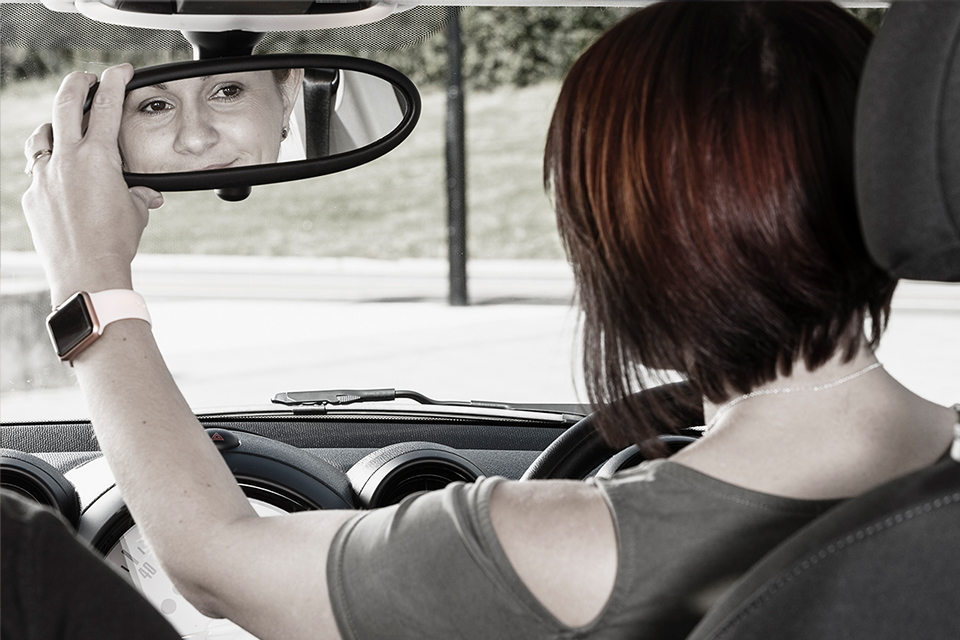Though it might seem obvious to point out, we’re going to walk you through the main situations in which you might need to change lanes when driving. We’ll also throw in some handy words of wisdom so that you’re ready to tackle anything that comes your way!
Lane changing explained
Overtaking
If you’re driving on a dual carriageway or motorway and end up stuck behind a slower moving vehicle, you could choose to change lanes in order to overtake it. When overtaking, you should only take action if it is safe and legal to do so.
You will need to take extra care when overtaking at night, as poor visibility can make it difficult to determine speed and distance. If you’re overtaking on a motorway, you should return to the left-hand lane as soon as you have safely overtaken the other vehicle.
You should not drive on the hard shoulder unless it’s in an emergency, or you’re directed to do so by the police.
Approaching junctions
On the approach to a junction, it’s vital that you’re in the right lane—the one that corresponds with the direction you intend to go in.
If you’re making a right turn, for example, you’ll need to be in the right-hand lane. The early bird gets the worm here, however. If you’re too late when changing lanes, you might not make it in time for the turn at the junction. So keep your eyes peeled!
On dual carriageways and motorways
When it comes to dual carriageways and motorways, the main reason you’ll find yourself changing lanes (other than for overtaking) is so that you can get to the right exit.
As you’re probably aware, to ensure you have enough time to make it to the right lane for your chosen exit, you’ll need to plan ahead. If you leave it too late, you might end up unable to change lanes due to heavy traffic.
Roundabouts
In order to take the right exit according to your intended destination, you’ll need to change lanes on a roundabout. Typically, if you want to take an exit on the first half of the roundabout (up to 180 degrees), you’ll need to stick to the left or centre lane.
If you’re taking an exit on the second half (over 180 degrees), you’ll need to switch to the right hand lane. If you don’t think it’s safe to change lanes, or you’ve mistimed it or gotten mixed up, continue on in your current lane—you’ll be able to go around the roundabout once more to reach the right exit.
In the wrong lane
If you’re a new driver especially, you might realise that you’re in the wrong lane all of a sudden. As tempting as it can be to give in to panic and rush into changing lanes, you need to remain calm. Wait and see if an opportunity to change to the right lane makes itself known. If it doesn’t, you’ll carry on to the next exit or junction and find another way to get back to the right direction.
Changing lanes safely

So, now you know the situations in which you might need to change lanes. The next question is, how do you go about it? Well, the trick to changing lanes safely is the simple, yet fundamental, MSM routine—also known as Mirrors, Signal and Manoeuvre.
It doesn’t matter why you’re changing lanes or where you’re changing lanes, you need to follow the MSM routine to the letter in order to stay safe.
Prepare
– Whether you’re planning on overtaking a vehicle, taking an exit on a dual carriageway/motorway, or on the approach to a junction, you need to prepare accordingly.
– You won’t want to change lanes at the last possible second. For starters, it’s a dangerous practice—if the road users behind you aren’t on the ball, they could end up colliding with you. Additionally, it puts extra pressure and stress on you to change lanes in time for your intended destination.
– As such, you need to give yourself plenty of time to make your move. You can do this by keeping your eyes peeled for any relevant road signs that will let you know where you need to be in order to get to your destination.
– If you haven’t got one already, you might want to consider buying a sat nav. It will give you the ability to plan your routes effectively, know which lanes you need to be and avoid any last minute panic.
Check mirrors and blindspots
– You need to check your mirrors and blindspots carefully for any potential hazards. Check your interior mirror and your right or left mirror, depending on your chosen lane. Take a few seconds to look to make sure you can properly determine the speed and position of other road users.
– Pay close attention to cyclists and motorcyclists—they’re often in the habit of weaving in and out of traffic, so you might not spot them immediately. This is why it’s vital that you don’t forget to look over your shoulder at your blindspot before making a move.
– You should only change position if you can do so without forcing other drivers to slow down immediately/steer to avoid. If there’s too much traffic, or a car is going too fast, you need to stay patient and wait for another opportunity.
– If the way still isn’t clear, do not try to force your way through a small gap. Drivers aren’t obligated to let you through and doing so could result in an accident. If you’ve timed everything too late and there isn’t enough space, you’ll have to continue on your way and turn around once you’re able to.
Signal your intentions

– Once you’ve checked your mirrors, and you’re sure it’s completely safe for you to change lanes, it’s time for you to signal your intentions to other road users. You’ll do this by using your indicators.
– The entire purpose of using your indicators is to help other road users figure out what you intend to do on the road. They’re not mind readers, after all. They will need plenty of warning so that they can adjust their speed if necessary.
– If the roads are completely clear, you can choose not to signal. Just in case you miss anyone, however, you’ll want to signal anyway. Depending on the lane you’re changing to, you’ll either use your left indicator or your right one.
– If you’ve switched on your indicator, but you suddenly spot a driver fast approaching, or attempting to overtake you, you should cancel your signal until they’ve passed you by. Once they’ve done so, you’ll need to check your mirrors and blindspots again before signalling.
Change lanes
– And you’re finally ready to make your move now that it’s safe! Maintain your speed (do not speed up!), keep a firm grip on your steering wheel and smoothly turn it towards the lane you’re turning into.
– Do not swerve into your chosen lane. Doing so could lead to you losing control of your vehicle (potentially colliding with another road user) and could also surprise the road users behind you.
– Make sure that you cancel your indicator once you’ve changed lanes to avoid any confusion. You’ll also want to make sure that you start to regain your speed so that you’re not slowing everyone down in your lane.
– If you’ve changed lanes in order to overtake another vehicle, you’ll need to change back to your original lane. Before you move, check your mirrors and blindspots again to make sure it’s safe. Then, signal and change lanes.
You should never weave between lanes, straddle lanes or try to change lanes all of a sudden. You need to follow the above steps to the letter in order to keep yourself and other road users safe when changing lanes.
